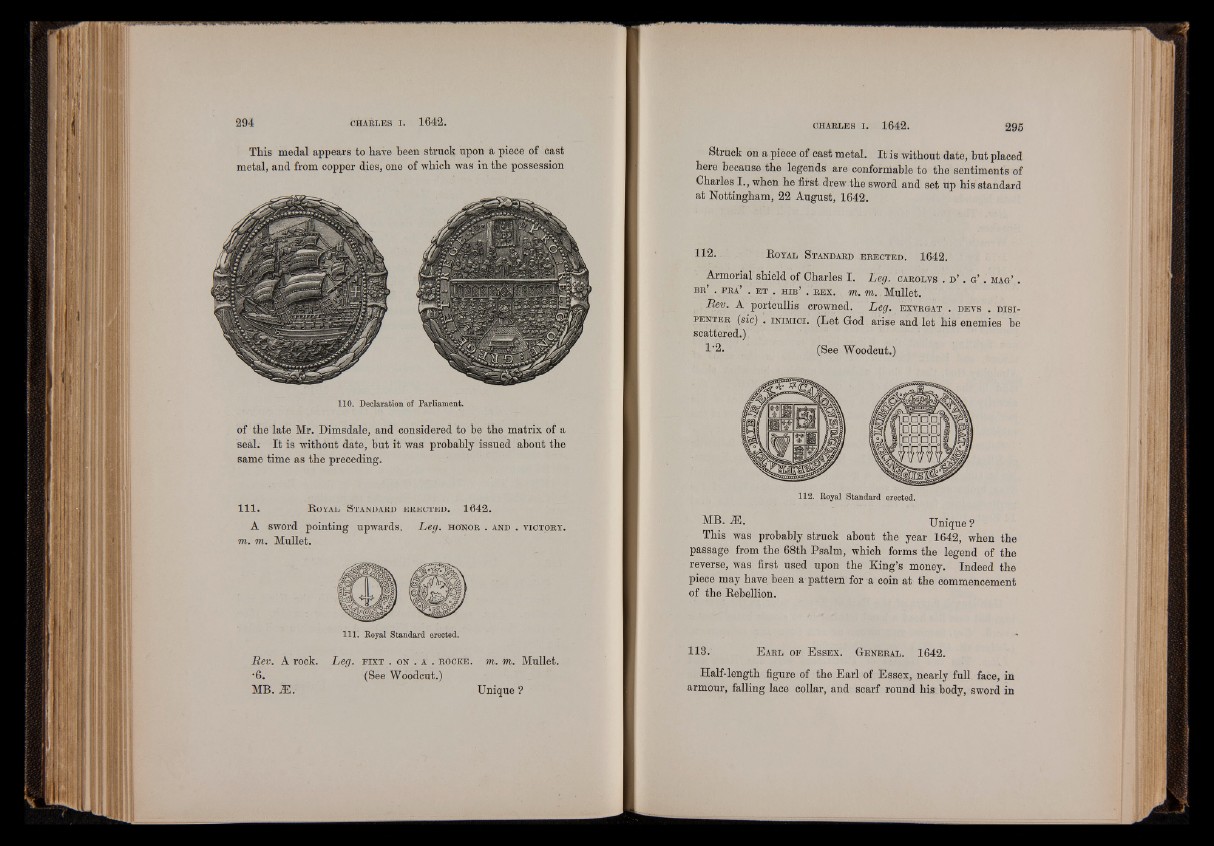
This medal appears to have been struck upon a piece of cast
metal, and from copper dies, one of which was in the possession
HO. Declaration of Parliament.
of the late Mr. Dimsdale, and considered to be the matrix of a
seal. It is without date, but it was probably issued about the
same time as the preceding.
111. R oyal S tandard e r e c t e d . 1642.
A sword pointing upwards. Leg. h o n o r . and . v ic to r y .
m. m. Mullet.
111. Royal Standard erected.
Rev. A rock. Leg. f ix t . on . a . r o c k e , m. m. Mullet.
•6. (See Woodcut.)
MB. Æ. Unique ?
Struck on a piece of cast metal. It is without date, but placed
here because the legends are conformable to the sentiments of
Charles I., when he first drew the sword and set up his standard
at Nottingham, 22 August, 1642.
112. R oyal S tandard e r e c t e d . 1642.
Armorial shield of Charles I. Leg. carolvs . d ’ . g ’ . mag’ .
b r ’ . e r a ’ . e t . h ib ’ . r e x . m. m. Mullet.
Rev. A portcullis crowned. Leg. ex v rg a t . d ev s . d i s i -
p e n t e r (sic) '. in im ic i . (Let God arise and let his enemies be
scattered.)
1'2- (See Woodcut.)
112. Royal Standard erected.
MB. M. Unique?
This was probably struck about the year 1642, when the
passage from the 68th Psalm, which forms the legend of the
reverse, was first used upon the King’s money. Indeed the
piece may have been a pattern for a coin at the commencement
of the Rebellion.
113. E a r l o f E s s e x . G e n e r a l . 1642.
Half-length figure of the Earl of Essex, nearly full face, in
armour, falling lace collar, and scarf round his body, sword in